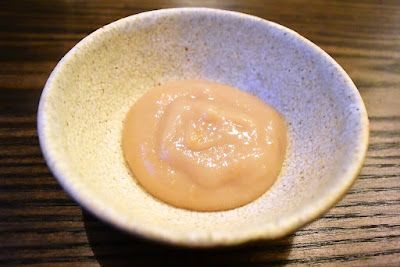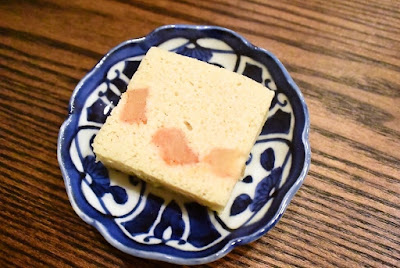Although the name literally means "roasted/grilled"
seri,
seri in this dish is usually blanched and mixed with other ingredients, at least with the regional
seriyaki in Akita Prefecture. A past simple version, possibly in a different region, used a roasting or grilling technique to prepare
seri. So why not grill
seri to intensify its flavor and then cook it as Akita people do?
Seri roots are probably the tastiest part, as the roots get rave reviews with
seri grown in the Mitsuseki region in Akita. While store-bought
seri here does not come with yummy roots (and my own
seri is impossible to dig in the hard-frozen ground outside), you can still enjoy the toasty note and sweet juiciness of the vegetable from grilling.
1/2 of recipe:
70 calories; 4.0 g protein; 2.9 g fat; 6.0 g carbohydrate; 3.2 g net carbs; 145 mg sodium (with 50% reduced-sodium soy sauce); 0 mg cholesterol; 2.8 g fiber
1/3 of recipe:
93 calories; 2.7 g protein; 2.0 g fat; 4.0 g carbohydrate; 2.1 g net carbs; 93 mg sodium (with 50% reduced-sodium soy sauce); 0 mg cholesterol; 1.9 g fiber





